

Carthage
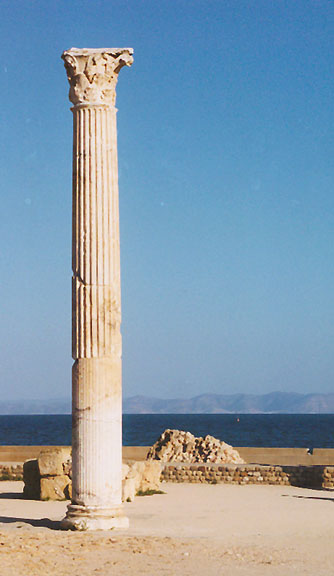
ancient city of Carthage
Carthage (ancient city) (Latin Carthago) great city of antiquity, on the northern coast of Africa, near modern Tunis, Tunisia. Dido was the legendary founder and queen of Carthage; the city was probably established as a trading post toward the end of the 9th century BC by Phoenicians.

Phoenician grave site
The earliest artifacts unearthed by archaeologists at the site date from 800 BC. The city was known to its Punic or Phoenician inhabitants as the "new city," probably to distinguish it from Utica, the "old city." Built on a peninsula jutting into the Gulf of Tunis, Carthage had two splendid harbors, connected by a canal. Above the harbors on a hill was the Byrsa, a walled fortress.
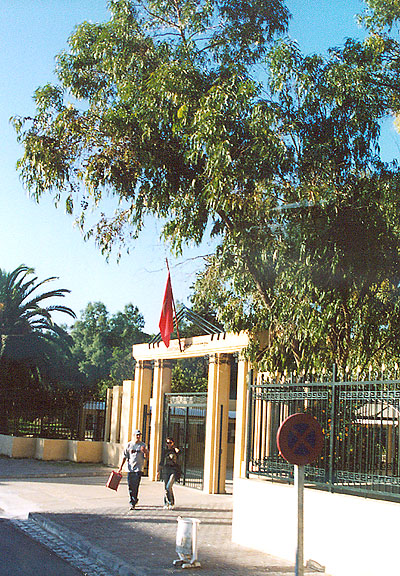
entrance to archeological site
By the subjugation of the Libyan tribes and by the annexation of older Phoenician colonies, Carthage in the 6th century BC controlled the entire North African coast from the Atlantic Ocean to the western border of Egypt, as well as Sardinia, Malta, the Balearic Islands, and part of Sicily. A Carthaginian admiral, Hanno, made a voyage along the Atlantic coast of North Africa.
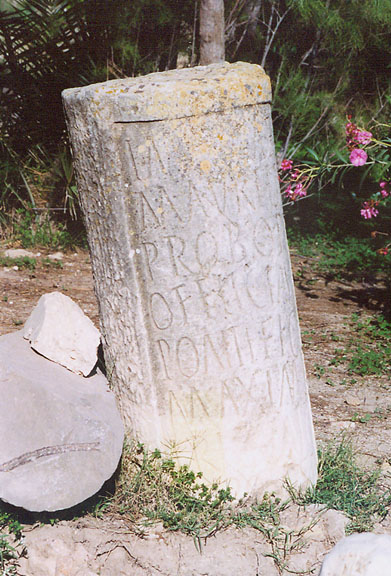
marker
The maritime power of the Carthaginians enabled them to extend their settlements and conquests, forming a scattered empire devoted to commerce. Among the commercial enterprises were the mining of silver and lead; the manufacture of beds and bedding; a lumber industry in the Atlas Mountains; the production of simple, cheap pottery, jewelry, and glassware for trade; and the export of wild animals from African jungles, of fruits and nuts, and of ivory and gold.

what the Roman baths were
Carthage produced little art. Most of the work of the Carthaginians was imitative of Egyptian, Greek, and Phoenician originals. In literature only a few technical works appeared. Thus, little is known of the everyday life of Carthage, its government, or its language. Religion in Carthage involved human sacrifice to the principal gods, Baal and Tanit, the equivalent of the Phoenician goddess Astarte. The Greek gods Demeter and Persephone and the Roman goddess Juno were adapted to later religious patterns of the Carthaginians.
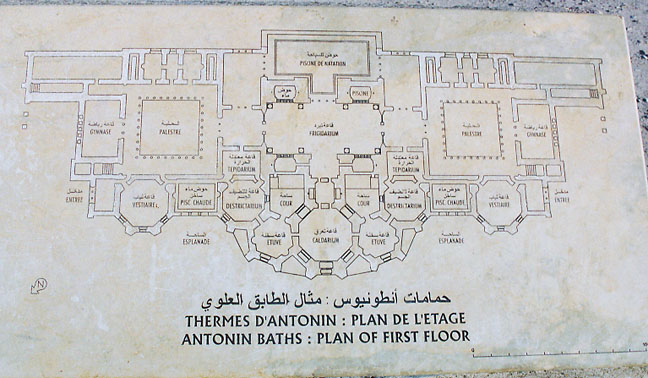
layout of the baths
Carthage engaged in war almost continually with Greece and with Rome for 150 years. Wars with Greece, beginning in 409 BC, concerned the control of Sicily, which lay only about 160 km (about 100 mi) from Carthage and formed a natural bridge between North Africa and Italy. Carthage first encountered defeat in Sicily in 480 BC, when the Carthaginian general Hamilcar (flourished 5th century BC) commanded a force that hoped to expand Carthaginian influence throughout Sicily, but was defeated by Gelon, the tyrant (ruler) of Syracuse.
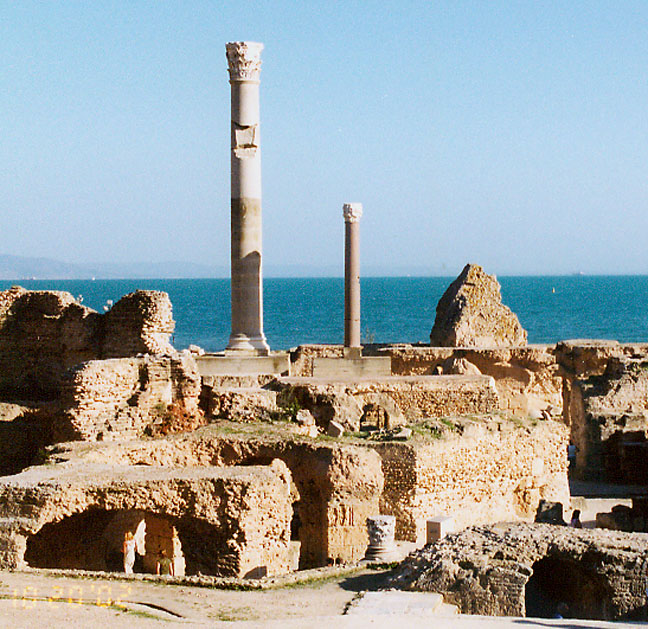
the remains
Further Carthaginian attempts to conquer Sicily were thwarted by armies under the command of the Syracusan tyrants Dionysius the Younger, Dionysius the Elder, Agathocles, and Pyrrhus, king of Epirus. After their final defeat in 276 BC, the Carthaginians continued to hold territory in Sicily; 12 years later the first of the Punic Wars against Rome began.

the lower level
The First Punic War (264-241 BC) brought to the fore the Carthaginian general Hamilcar Barca. Defeated in Sicily, Hamilcar invaded Spain. His conquests in southern Spain were completed by his son-in-law Hasdrubal and by his son Hannibal. Carthage ceded its holdings in Sicily to Rome after the final Roman victory at the Aegates Islands. During the Second Punic War (218-201 BC), Hannibal marched eastward along the northern shore of the Mediterranean from Spain and finally crossed the Alps into Italy. Hannibal's final defeat, however, resulted in the loss of Spain and various island possessions of Carthage.
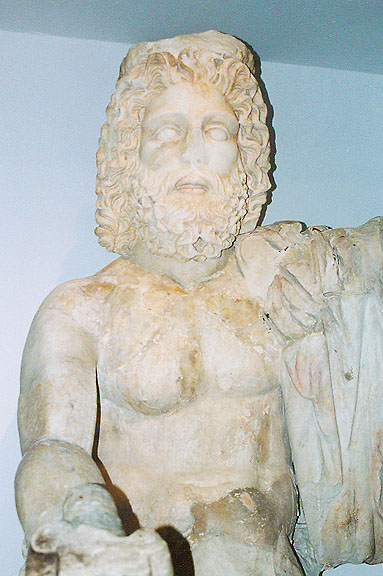
statue of a Roman God
In the Third Punic War (149-146 BC), the Romans under Publius Cornelius Scipio Aemilianus Africanus Numantinus destroyed the city of Carthage. In a final gesture of contempt, the Romans spread salt over the ruins. The victors thus fulfilled the wish of the Roman statesman Cato the Elder.
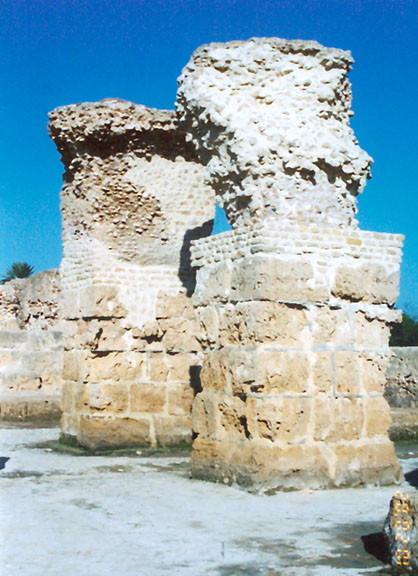
remains of the baths lower level
Occupancy of the site was forbidden for 25 years. In 122 BC a new city, Colonia
Junonia, was founded; it lasted only 30 years. In 46 BC Julius Caesar visited
the site and proclaimed that a city should be built there. His wishes were
fulfilled by the Roman emperor Augustus, in 29 BC, when a city called Colonia
Julia Carthago was founded. This new city flourished until, according to some
historians, it was second only to Rome in prosperity and administrative
importance.
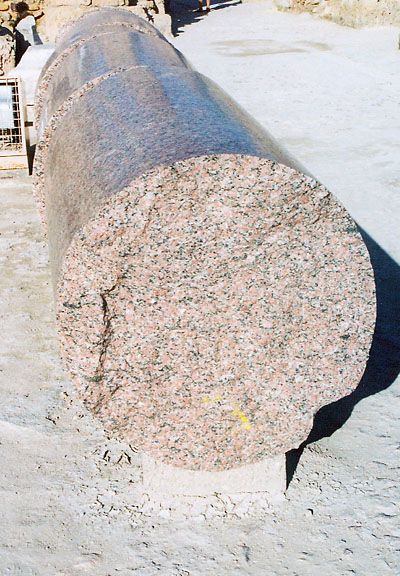
broken granite column
Roman Carthage also became a center of Christianity, being the seat of a bishop from late in the 2nd century. St. Cyprian was bishop there in 248; Tertullian, a Christian ecclesiastical writer, lived and worked in Carthage in the 3rd century; and St. Augustine was bishop of nearby Hippo in the early 5th century.

underground heating chambers
Carthage was fortified against barbarian attack in 425. In 439 the Vandal king
Gaiseric subjugated the city. It remained the Vandal capital until 533, when the
Byzantine general Belisarius captured the city, renaming it Colonia Justiniana
Carthago in honor of the Byzantine emperor Justinian I. Between 697 and 705 the
city was captured by the Arabs.
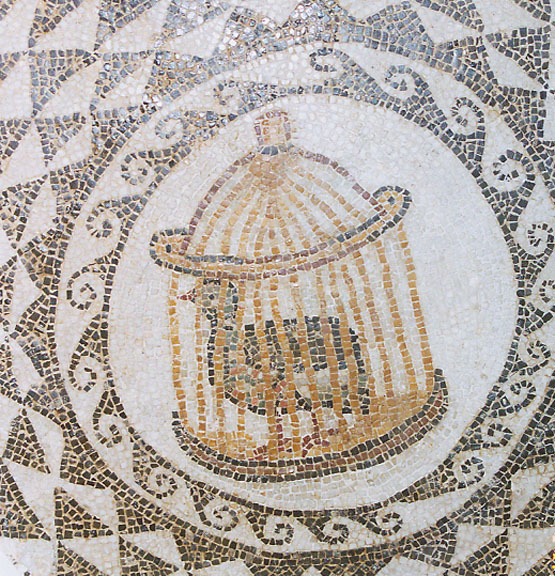
bird in a cage
(Fragment from a Roman mosaic)
In 698 it was again destroyed. A great deal of archaeological activity was carried on at the site, particularly in the late 19th century, uncovering early Punic artifacts and Roman, Byzantine, and Vandal buildings. Today Carthage is a wealthy suburb of Tunis.
Text from Microsoft Encarta
![]()
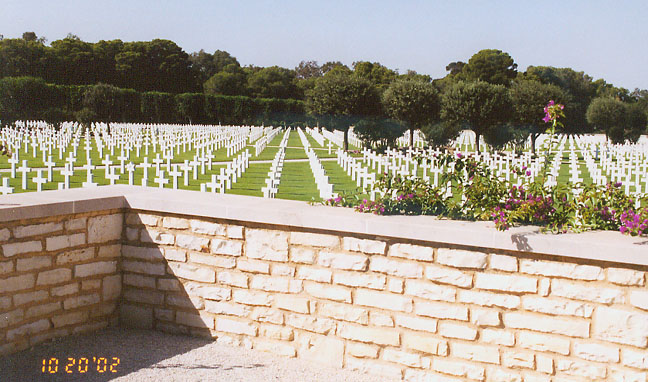
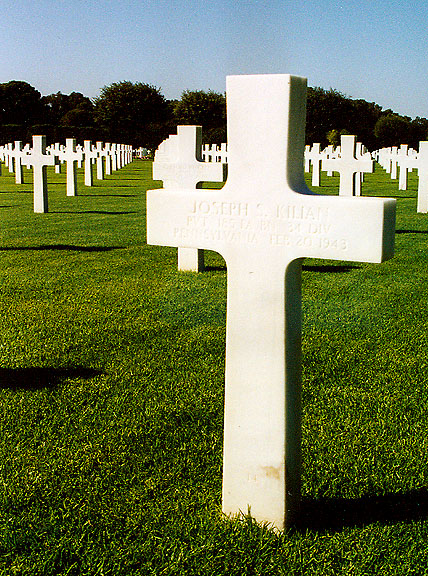
A high proportion of these gave their lives in the landings in, and occupation of Morocco and Algeria and in subsequent fighting which culminated in the liberation of Tunisia. Others died as a result of accident or sickness in these and other parts of North Africa, or while serving in the Persian Gulf Command in Iran.
![]()
![]()